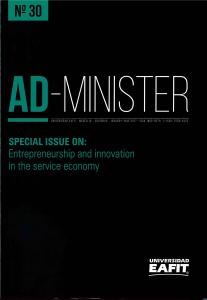Service performance in public healthcare system: data envelopment analysis
Main Article Content
Keywords
Scale Efficiency, Return to Scale, Damage to Scale, Healthcare performance, Hospital Performance.
Abstract
As well as companies that compete in market, in public health system organizations compete to satisfy customer’s need, and therefore identifying those needs and delivering the value is critical in success. Return to Scale and Damage to Scale are measures. In this study data envelopment analysis is developed to measure the Return to Scale and Damage to Scale in public health organization. Two new assumptions for production possibility set are proposed as Weak Natural Disposability and weak managerial disposability. Then three types of models including efficiency evaluation, Return to Scale determination, and Damage to Scale determination are proposed based on radial and non-radial models.
A case study is handled using real data of 33 hospitals in Tehran. Each hospital is assumed as a decisionmaking unit with 4 inputs, 2 desirable outputs, and 2 undesirable outputs. The proposed approaches
are straightforward and applicable for real world problems.
Downloads
References
Butler, T.W., and Li, L. (2005). The utility of returns to scale in DEA programming: An analysis of Michigan rural hospitals. European Journal of Operational Research, 161,469-477.
Blank, J.L.T., and Valdmanis,V.G. (2010). Environmental factors and productivity on Dutch hospitals: a semi-parametric approach. Health Care Manag Sci, 13, 27–34.
Charnes, A., Cooper W.W., and Rhodes, E. (1979). Short communication: measuring efficiency of decision making units. European Journal of Operations Research. 3, 339-340.
Cooper, W.W., Park, K.S., and Pastor, J.T., (2000). RAM: A range adjusted measure of efficiency. Journal of Productivity Analysis, 11, 5–42.
Cooper W.W., Seiford, L.M., and Zhu, J. (2011). Handbook on Data Envelopment Analysis, Second Edition, Spiringer.
Ding, D. X. (2014). The effect of experience, ownership and focus on productive efficiency: A longitudinal study of U.S. hospitals. Journal of Operations Management, 32, 1–14.
Goldstein, S.M., Ward, P.T., Leong, G.K., and Butlerd, T.W.(2002). The effect of location, strategy, and operations technology on hospital performance. Journal of Operations Management, 20, 63–75.
Garcia-Lacalle, J., and Martin, E. (2010). Rural vs urban hospital performance in a ‘competitive’ public health service. Social Science & Medicine, 71, 1131-1140.
Grosskopf, S., Margaritis, D., and Valdmanis, V. (2004). Competitive effects on teaching hospitals. European Journal of Operational Research, 154, 515–525.
Gok, M.S., and Sezen, B. (2013). Analyzing the ambiguous relationship between efficiency, quality and patient satisfaction in healthcare services: The case of public hospitals in Turkey. Health Policy, 111, 290– 300.
Hollingsworth, B. (2003). Non-parametric and parametric applications measuring efficiency in health care. Health Care Management Science, 6(4), 203–218.
Joses, M. K., Emrouznejad, A., Vaz, R. G., Bastiene, H., and Padayachy, J.(2008). Efficiency measurement of hospital. International Journal of Productivity and Performance Management, 57(1), 72-92.
Kawaguchi, H., Tone, K., and Tsutsui, M. (2014). Estimation of the efficiency of Japanese hospitals using a dynamic and network data envelopment analysis model. Health Care Management Science, 17, 101-112
Lee, K., Chun, K., and Lee J. (2008). Reforming the hospital service structure to improve efficiency: Urban hospital specialization. Health Policy. 87,41–49.
Nayar, P., and Ozcan, Y.A. (2008). Data envelopment analysis comparison of hospital efficiency and quality. Journal of Medical Systems, 32(3), 193-199.
Nunamaker, T. (1983). Measuring routine nursing service efficiency: a comparison of cost per day and data envelopment analysis models. Health Service Research, 18(2 Pt 1), 183–205.
O'Neill, L., Rauner, M., Heidenberger, K., and Karus, M. (2008). A cross-national comparison and taxonomy of DEA-based hospital efficiency studies. Socio-Economic Planning Sciences, 42(3),158–189.
Rosko, M. D., and Mutter, R. L. (2011). What have we learned from the application of stochastic frontier analysis to U.S. hospitals?. Medical Care Research and Review, 68(1), 75S–100S.
Sherman, H. (1984). Hospital efficiency measurement and evaluation Empirical test of a new technique. Medical Care, 22(10).
Sueyoshi, T., and Goto, M., (2011a). Measurement of returns to scale and damages to scale for operational and environmental assessment: how to manage desirable (good) DEA-based and undesirable (bad) outputs. European Journal of Operational Research, 211, 76–89.
Sueyoshi, T., and Goto, M. (2011b). DEA approach for unified efficiency measurement: assessment of Japanese fossil fuel power generation. Energy Economics, 33, 292–303.
Sueyoshi, T., and Goto, M. (2012a). Efficiency-based rank assessment for electric power industry: a combined use of Data Envelopment Analysis (DEA) and DEA Discriminant Analysis (DA). Energy Economics 34, 634–644.
Sueyoshi, T., and Goto, M. (2012b). Returns to scale and damages to scale under natural and managerial disposability: strategy, efficiency and competitiveness of petroleum firms. Energy Economics, 34, 645–662.
Sueyoshi, T., and Goto, M. (2012c). Returns to scale and damages to scale with strong complementary slackness conditions in DEA assessment: Japanese corporate effort on environment protection. Energy Economics, 34, 1422–1434.
Sueyoshi, T., and Goto, M. (2012d). Environmental assessment by DEA radial measurement: US coal-fired power plants in ISO (Independent System Operator) and RTO (Regional Transmission Organization). Energy Economics, 34, 663–676.
Sueyoshi, T., and Goto, M. (2012e). Weak and strong disposability vs. natural and managerial disposability in DEA environmental assessment: comparison between Japanese electric power industry and manufacturing industries. Energy Economics, 34, 686–699.
Sueyoshi, T., and Goto, M., (2012f). DEA radial and non-radial models for unified efficiency under natural and managerial disposability: theoretical extension by strong complementary slackness conditions. Energy Economics, 34, 700–713.
Thanassoulisa, E., Portelab, M. S., and Graveneyc, M.(2016). Identifying the scope for savings at inpatient episode level: An illustration applying DEA to chronic obstructive pulmonary disease. European Journal of Operational Research, 255(2), 570–582
Tsai, P.F., and Mar, M.C. (2002). A variable returns to scale data envelopment analysis model for the joint determination of efficiencies with an example of the UK health service. European Journal of Operational Research, 141, 21-38.
Tsekouras, K., Papathanassopoulos, F., Kounetas, K., Pappous, G. (2010). Does the adoption of new technology boost productive efficiency in the public sector? The case of ICUs system. International Journal of Production Economics, 128, 427–433.

